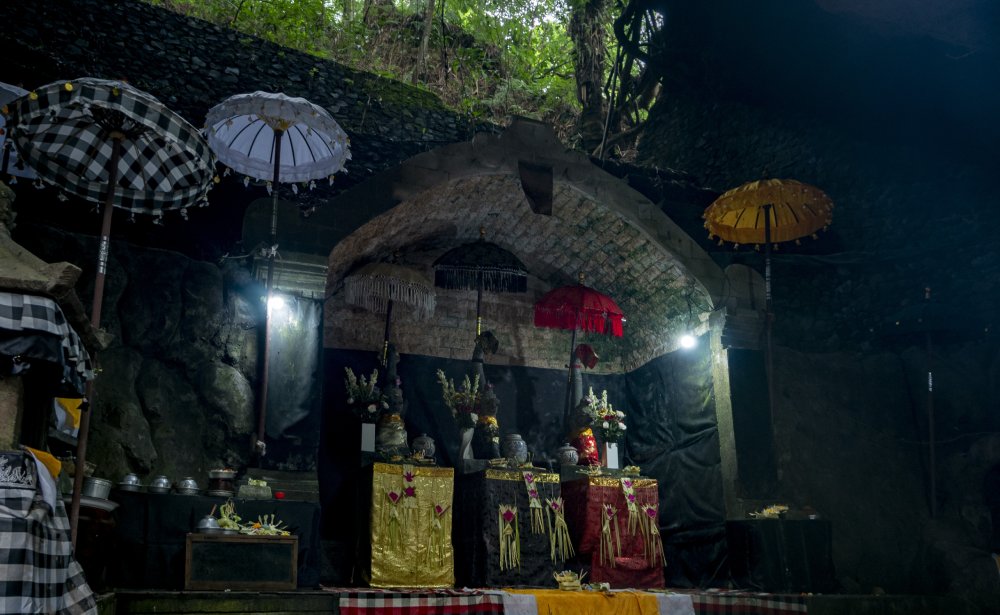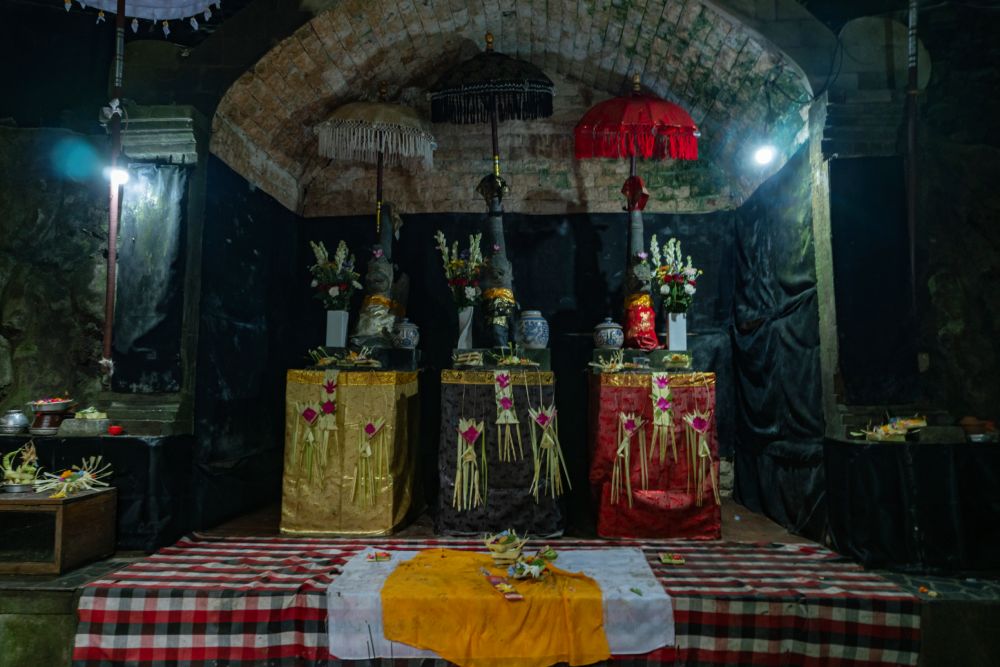
Dedicated to the three cosmic dragons, especially Naga Basuki, Pura Goa Raja is said to be an entrance to a cave that travels deep into the heart of Mt.Agung, and beyond.
Found at the foot of Bali’s most holy complex, Pura Besakih, Pura Goa Raja sits in relative obscurity on the slopes of Mt. Agung. A small flight of stairs takes you down the side of a shallow ravine. At the bottom sits a dried riverbed, and a tight opening between two rocky cliff faces; there is a narrow gap enough for a single person to walk through. This leads to an alcove, within which shrines have been built. In the alcove, damp and cool, with water dripping down its walls, is said to be opening of two distinct caves.
One cave is said to lead to the crater of Mt.Agung, with witnesses noting that smoke and ash were seen here during both the 2017 and 1963 eruptions; as well the odious reek of sulphur. The other cave is said to connect to Pura Goa Lawah, the Bat Cave Temple in Klungkung, 30km away! The story behind this, passed down through the generations, is that during a cockfight at Goa Lawah one of the roosters wandered off. The owner thought his prized fighter to be lost, until one day it was found roaming the alcove up in Besakih, at Goa Raja! The pathways of these caves have since collapsed due to the Agung’s eruption.

Shrines are setup within the alcove and at the centre are three effigies (pralingga) of the three cosmic dragons (Sang Hyang Naga Tiga) — Anantabhoga, Basuki and Taksaka — who were tasked to bring Mt.Agung to Bali from Java. The three are symbolic of the three elements of air, water and earth. As guards to the stability of the universe, it was once believed that the three dragons would meet at Goa Raja.
The cave itself is part of another fable. In the story of the sage Dang Hyang Sidimantra, the wiseman would meet with Basuki and present him with offerings of milk, honey and eggs. One day, his gambling son Manik Angkeran, in need of money, severed Basuki’s tail to obtain the jewel or crown at its tip. Basuki scorched Manik to a crisp. Sidimantra, begged for his son’s life to be returned. Basuki, respecting the devoted sage granted his wish and revived Sidimantra — on the condition that he would be physicallly separated from the same lands. Manik was brought far off to the west and, the land was gouged and the filled its place. This was, in mythology, the creation of the Bali Straits and the separation of Bali and Java.
Though it is only legend that dragon Basuki dwells in the cave, he does reside there spiritually, enthroned and worshipped at Goa Raja as Dang Hyang Naga Basuki. Devotees will come and present their offerings of milk, honey and eggs. In return, they commonly pray for offspring, protection or for their ailments to be cured.









